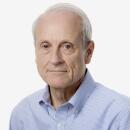Cycling in Los Angeles: The rants, the roads and the bigger picture
We’re not first to this party. The Los Angeles Times editorial page writes frequently about the condition and use of city streets, and about the changing perceptions of paved roadways as public space to be used for commerce, commuting, recreation and other purposes. And in the last several years that discussion necessarily has come to embrace the growing number of cyclists among the motorists. But it’s a discussion that draws much intelligent conversation -- and the occasional entertaining rant -- elsewhere as well, on locally focused blogs and websites, from la.streetsblog.org to Curbed to dozens in between.
So The Times has no pretense of reinventing the wheel by zeroing in on social and policy questions raised by the city’s acknowledgment of the bicycle. But in thinking and editorializing on issues like potholes andgreen bike lanes -- or whether residents ought to be able to grow vegetables in parkway strips, or neighborhood councils ought to take control of medians, or property owners should pay for bonds to do road repairs that were left undone for decades -- we hear more and more questions and comments from readers about bikes. The purpose of The Times editorial page’s Roadshare project is to delve more deeply into the issues raised in those questions and comments.
I’m a fan and a pretty regular reader of the Daily News, especially of the editorial page, so I’m a little embarrassed to acknowledge that I completely missed the Los Angeles Newspaper Group’s Summer of Cycling editorials on bikes in Southern California until I read about it on Streetsblog. I’ve gone back and read what I can find. And we’ve read and heard from cyclists their exasperation with the car-versus-bike, us-versus-them approach to cycling issues. And we get it.
But worn-out discussion though it may seem to many who have been immersed in the issue for years, the issue of how to safely share the road won’t be going away anytime soon. We ask whether Los Angeles can be a cyclist’s city, not because there’s any doubt that thousands of cyclists already use the road to commute, to shop or for recreation and exercise, but because we want to know whether our city can sufficiently get its act together so that its streets can enhance, instead of challenge, the quality of life here. Can City Hall keep up with the grass-roots movement that is remaking the streetscape? Will it help? Will it get in the way?
For example, how can one city department paint a lane for cyclists while another city department requires residents to put their garbage cans in the middle of it on trash pickup day?
Yes, that’s one of those rants. But it’s a genuine issue. During my own Tuesday commute to work on Avenue 50 through Highland Park, I have witnessed more than a few close calls for cyclists brought on not by the stereotypical (and at least partly mythical) driver applying her lipstick while veering into the next lane, or the imagined hipster cyclist weaving through car traffic, but by a less-than-thoughtful -- or, at least, a less-than-coordinated -- city effort to divide up the street.
My Avenue 50 vantage point, by the way, is the sidewalk, at least on those three days a week when I don’t have to be at work for 8 a.m. editorial board meetings. I’m not sure that being a pedestrian commuter makes me any more of an honest broker in the street discussion than anyone else, but let’s remember that although there may continue to be interest in the bike-versus-car trope, not all of us on the road belong to one of those two teams. So while we’re thinking, talking and writing about bikes and cars, it’s a broader discussion: It’s about public space and public decision-making.
ALSO:
Is 3 feet for cyclists too much to ask?
Victory for cyclists: Riders get their 3-foot cushion
Will the fifth time be the charm for the 3-foot rule?
This post is part of an ongoing conversation to explore how the city’s cyclists, drivers and pedestrians share and compete for road space, and to consider policy choices that keep people safe and traffic flowing. For more: latimes.com/roadshare and #roadshareLA.
More to Read
A cure for the common opinion
Get thought-provoking perspectives with our weekly newsletter.
You may occasionally receive promotional content from the Los Angeles Times.











